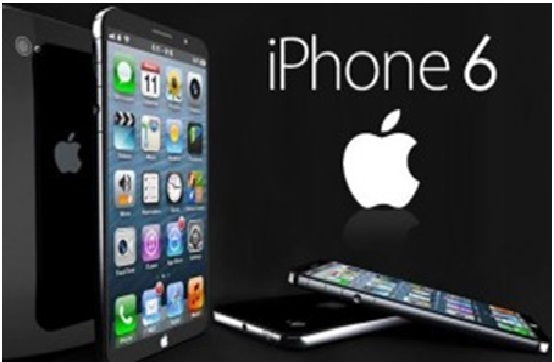You may accept – as nearly every other person – that the @ sign is an innovation of the “Web period”, an image uncommonly made to shape email addresses. Not with standing, its history is substantially more old and its root backpedals to Latin. The Arabs had utilized it for a considerable length of time, and the mariners utilized it chronically when enumerating the substance of the holds of their boats. We reveal to you the narrative of “@”, a standout amongst the most utilized images today, and in the meantime one of the slightest known.
In the event that you are perusing this article on a PC associated with the web, you most likely have an email address and utilize the “@” image a few times each day as a component of the email locations of your companions or customers. Be that as it may, most Internet clients are ignorant of the inception – and now and then even the significance – of this uncommon however omnipresent character. Given its present utilize, which is quite often connected to the space of PCs or electronic mail, one may feel that it is an image uncommonly intended for that utilization, close to two or three decades old.
Yet, in all actuality it is an old image, known and utilized as a part of the Middle Ages, over 500 years prior.
Most history specialists acknowledge that the source of “arroba” (@) originates from the Arabic dialect, solidly from the expression “ar-rob”, that implies fourth or fourth part. With respect to the image itself, this sort of “a” encased by a circle, has its starting points in a typical practice among those in charge of replicating books in Latin, by hand, back in the Middle Ages.

These copyists utilized “@”, consolidating the letters “a” and “d” to shape the Latin relational word “ad”, which signifies “to” . It appears to be very sensible: in the event that you need to duplicate many circumstances several pages by hand, odds are you are searching for all conceivable approaches to spare work. The relational word “ad” seemed all the time in these writings, and it bodes well that it has been supplanted by a solitary image. Little by little, the “@” ended up plainly prominent in different zones, and started to show up – for instance – in authority letters written in Latin before the name of its recipient.
Here is what Wikipedia says about Arroba (@)
One of the most seasoned reports known to contain a printed “@” dates from the year 1536, and it is a letter sent by an Italian dealer from Seville to Rome. The letter points of interest the landing of three boats from America, stacked with fortunes. You can read sections like “Subsequently, a wine, which is 1/13 of a barrel, is 70 or 80 ducats …” In that specific circumstance, the arroba spoke to a unit of measure utilized by Greeks and Romans that was comparable to “a fourth Of amphora. “Confounded, correct? Be that as it may, that is nothing: it could (and in a few places still can) be utilized as a measure of limit or volume, with an esteem that differed by the item being exchanged. For instance, on the off chance that it was fluids, “an arroba of oil” was proportional to around 12 and a half liters, yet in the event that it was consulting with wines, its esteem was something more than 16 liters.
It was likewise utilized as a measure of mass. Truth be told, the “@” speaks to a mass equal to a fourth of a “quintal.” The quintal is an old unit of mass and limit utilized as a part of Spain and in Latin America – in Argentina it is basic to tune in to the elderly, in The field, talk about “quintals of wheat per hectare” – which meets precisely 46.0093 kg. A “@”, in this way, at that point, adds up to a little more than 11 kilograms and a half.
In spite of the antiquity of that document, some historians – like the Aragonese Jorge Romance – assure that the symbol of the arroba was already used in the year 1448, in the detail of a shipment of wheat from Castile towards the Kingdom of Aragon. But with the passage of time, and except for very specific regions, the “@” stopped being used. It only remained more or less alive in the United States, where it was used in accounting records, establishing the unit price of a product in an invoice.
It could appear in the middle of the description of an operation, something like “15 boxes @ 5 dollars each,” indicating that the value of each box invoiced was five dollars. It also makes a lot of sense, since in English “@” is said “at”, which means “to” (and also “en”, “de” and “towards”). This made when the typewriter was invented, at the end of century XIX, the symbol of the arroba was included in its keyboard. And, as the computer keyboard is an evolution of those machines, the at sign is also in them.
But the relationship of the “@” with the email is much after all this. When engineer Ray Tomlinson, who created the e-mail in 1971, was looking for a symbol to identify e-mail addresses, one of the few available on keyboards was just the arroba. “It would have been easier to use a bracket, a parenthesis or even a comma, but these symbols were already used for other purposes, and the symbols were left free, the @ was the best,” explained a few years ago Tomlinson. “Another point in favor of this symbol is that when translated as at in English it gave a feeling of localization,” he added. The first e-mail address of the story was “tomlinson @ bbn-tenexa” This address, and according to the use that this engineer gave him at the computer, can be interpreted as “Tomlinson in the (@) bbn-tenex machine “. In this way, a character invented by medieval scribes as a way to simplify their work became the symbol of email. Is not that amazing?








